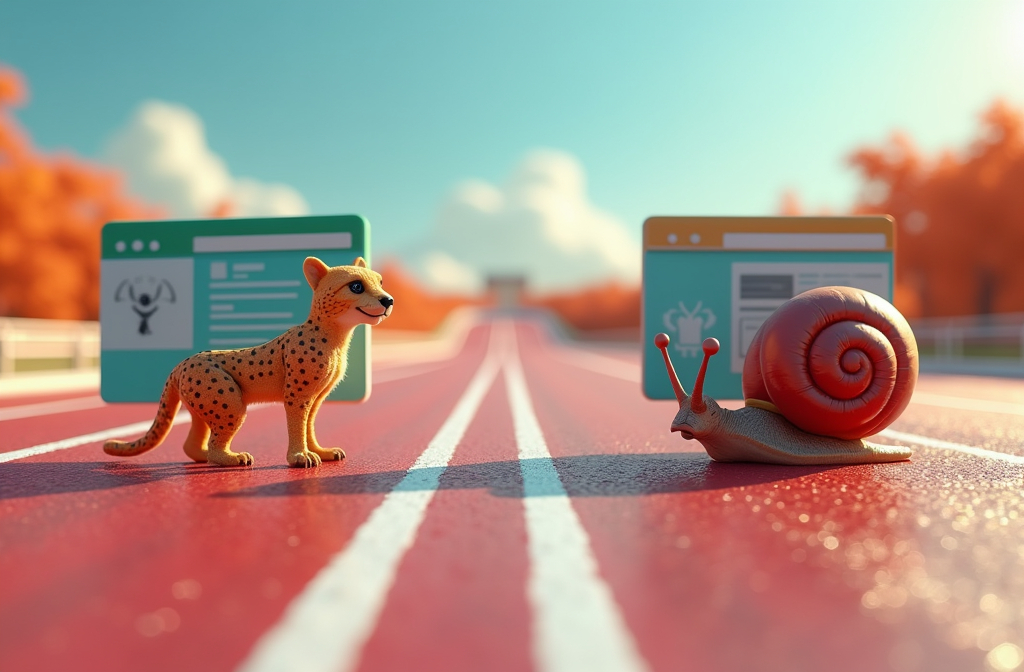What Is “Above the Fold” and Why It Still Matters in 2025
You’ve probably heard the phrase “above the fold” before. It’s one of those old-school web design terms that still gets thrown around – but what does it actually mean?
And more importantly… does it still matter in 2025?
Short answer: yes. A lot.
Here’s what “above the fold” means for your website, why it’s still a big deal, and how to make sure yours is working for you – not against you.
What “Above the Fold” Actually Means
Back in the newspaper days, “above the fold” referred to the top half of the front page – the bit you could see when the paper was folded in half on a newsstand.
In web design, it means the part of a webpage that’s visible before you start scrolling.
It’s the first thing people see when they land on your site. And in those first few seconds, visitors decide whether to stick around… or hit the back button.
So yeah – it’s important.
Why It Still Matters in 2025
Even though we’re all used to scrolling now, your above-the-fold section is still prime real estate.
Here’s why:
- It creates your first impression
- It tells visitors if they’re in the right place
- It guides people toward what to do next
- It helps with SEO and user engagement
- It affects how fast your content gets seen on mobile
If your above-the-fold area is confusing, cluttered or empty… people leave. Simple as that.
What a Great “Above the Fold” Looks Like
There’s no one-size-fits-all layout, but every strong top section includes these elements:
A clear headline
This should say what you do and who you help – in plain English.
Example:
“Web design for Hampshire businesses who want a website that works.”
A short subheading or benefit line
One or two lines that explain how you help solve a problem or deliver value.
Example:
“Get a fast, easy-to-edit WordPress site that brings in leads – without the tech headache.”
A call to action
What should visitors do next? Click a button? Book a call? Read more?
Example:
“View recent work”
“Get a free quote”
“Let’s have a quick chat”
A visual (image or illustration)
This helps anchor the layout. Could be a photo, a graphic, or even a looping video – just make sure it adds clarity, not clutter.
What Not to Do
Lots of websites still get this part wrong. Here’s what to avoid:
- Vague headlines like “Welcome to Our Website”
- Stock photos that don’t relate to what you do
- A giant slider with rotating images that don’t say much
- No visible call to action
- Cluttered menus or distractions that pull focus
If a visitor can’t immediately figure out what your site is about – you’ve already lost them.
Desktop vs Mobile – What’s Actually Visible?
Here’s the trick: “above the fold” isn’t the same on every screen.
What fits nicely on a laptop might be cut off halfway down on a phone. That’s why mobile-first design is key in 2025.
Your headline, benefit and call to action should all be visible on mobile without needing to scroll. That’s your true fold line now.
Test your site on your own phone – not just a desktop.
How to Check Your Own Site
Go to your homepage and ask:
- Do I understand what this business does in under 5 seconds?
- Can I see a clear call to action?
- Does it feel easy to navigate and professional?
- Does it work well on my phone?
If not, that top section might need a rethink – and that one change could dramatically improve your bounce rate and conversions.
What You Can Do Next
Don’t overthink it – start by simplifying.
If your headline isn’t clear, change it. If your call to action is missing, add one. And if your content doesn’t load quickly or show clearly on mobile, fix it.
Want a second opinion? I offer honest, plain-English website reviews to help you spot issues like this – and fix them fast.
Your above-the-fold section is your first impression. Let’s make sure it’s a good one.


